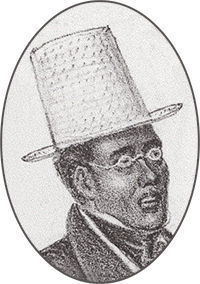
Lydia Maria Child in Broughton’s Meadow
Relatively little has been made locally of the two years that Lydia Maria Child spent in Northampton between 1838 to 1841. As one of the best known and most widely read authors of her day, Child might have expected a warmer welcome here at the time and, given the vital role she played in this pivotal period of abolition history, to be remembered prominently by local historians. While she successfully established superficial acquaintances with the many of the town’s elite she was isolated as a radical Garrisonian abolitionist by the largely Calvinist town. Only the aristocratic Unitarian, Anne Jean Lyman, herself skeptical of the anti-slavery tactics of the Garrisonians, went out of her way to befriend the visiting celebrity.
Though the Old Hampshire Anti-Slavery Society had been formed in 1836, Northampton had then yet to renounce the policies of the American Colonization Society which would have freed southern blacks only to send them with their northern brethren to Liberia in Western Africa. In her letters a distaste for the town is apparent and may account for her being passed over as a notable former resident. Most often mentioned of her numerous caustic references to Northampton is this disparaging remark made in a letter to her friend Henrietta Sargent on November 18, 1838. I extend the comment to include her prophecy of the future of equal rights for blacks:
I have never been so discouraged about abolition, as since we came into this iron-bound Valley of the Connecticut. I have ceased to believe that public opinion will ever be sincerely reformed on the question, till long after emancipation has taken place. I mean that, for generations to come, there will be a very large minority hostile to the claims of colored people; and the majority will be largely composed of individuals, who are found on that side from any and every motive, rather than hearty sympathy with the down-trodden race. Public events, probably of the most unexpected character, will help along the desired result.
This forceful writing style characterizes many of the letters she produced during the period she was involved here with husband David’s beet sugar experiment. Her exile in Northampton heightened her sense of how difficult the struggle to end slavery would be and steeled her for the long struggle ahead. Her exposure to slaves, brought to Northampton by vacationing southerners, cemented her opinion that
[T]he South will never voluntarily relinquish her slaves, so long as the world stands. It must come through violence. I would it might be averted; but I am convinced that it cannot be.
This was a painful conclusion to arrive at for a non-resistant Garrisonian abolitionist. On June 9, 1839, in a letter from Boston during a year-long retreat to the warm-blooded abolition and liberal social atmosphere of Boston, she is even more explicit in her contempt for Northampton:
I never was in a place that I liked less that Northampton, nor have I ever in my life spent so unhappy a year as I spent there. Nature has been lavish of beauty, but the human soul is stagnant there. My strong love of freedom could ill endure the bigotry and intolerance that prevails.
And again, once she returned to Northampton, with the beet sugar experiment now moved to the outskirts of town in what would later become Florence, she expressed her frustration first to Ellis Gray Loring on February 9, 1841.
As for the Connecticut Valley, I dislike it more and more, every week I live. If I buy a pound of butter, it is sure to fall short an ounce … Calvinism sits here enthroned, with high ears, blue nose, thin lips, and griping fist. I would I had lived in an age when the gaunt spectre had done his mission.
In this letter she requests information about George Ripley’s plan for the Brook Farm Institute of Education and Agriculture, the utopian community that was forming in West Roxbury. She writes to Louisa Loring the following week:
I wish Geo. Ripley had started his plan before we came here, to this Desert where no water is, but now our wisest way is to stay here, and work diligently, till the [beet sugar] experiment is fully and fairly tried.
The Childs had shown an interest in adopting a communitarian lifestyle. Two years before coming to Northampton they had plans to join Benjamin Lundy, David’s old boss and an early aboltionist, at his free labor community in Matamoras, Texas. By May, 1836 the tensions between Texas colonists and Mexican troops had mounted to the point Lundy gave up his plan and David Lee Child embarked on his scheme to manufacture sugar from beets in an effort to compete with slave-grown sugar cane.
But now, in May of 1841, with no profits on the horizon and creditors at the doorstep, Maria Child accepted a call from the American Anti-Slavery Society to become the editor of the National Anti-Slavery Standard in New York City. Ironically, just as Child departed, a group of Connecticut ex-patriots, Garrison partisans, began to gather in Broughton’s Meadows right next to the twenty acres the Childs were renting to grow beets. Their goal, to establish a community that would work cooperatively at silk production and provide a center for reform along the Garrisonian program of equal rights, non-resistance and anti-clericism. Garrison himself had promoted the idea to one of the founders, his brother-in-law, George W. Benson.
David remained behind and was on the seen for most of the early years of the Northampton Association of Education and Industry. Though he never joined as a member (perhaps his personal insolvency made joining impossible) he shopped at the Community store and joined NAEI members at rallies in Northampton. It was David who put the name of David Ruggles before the membership committee after Maria, now living at the home of Ruggles’ compatriot Isaac Hopper made his plight known.


